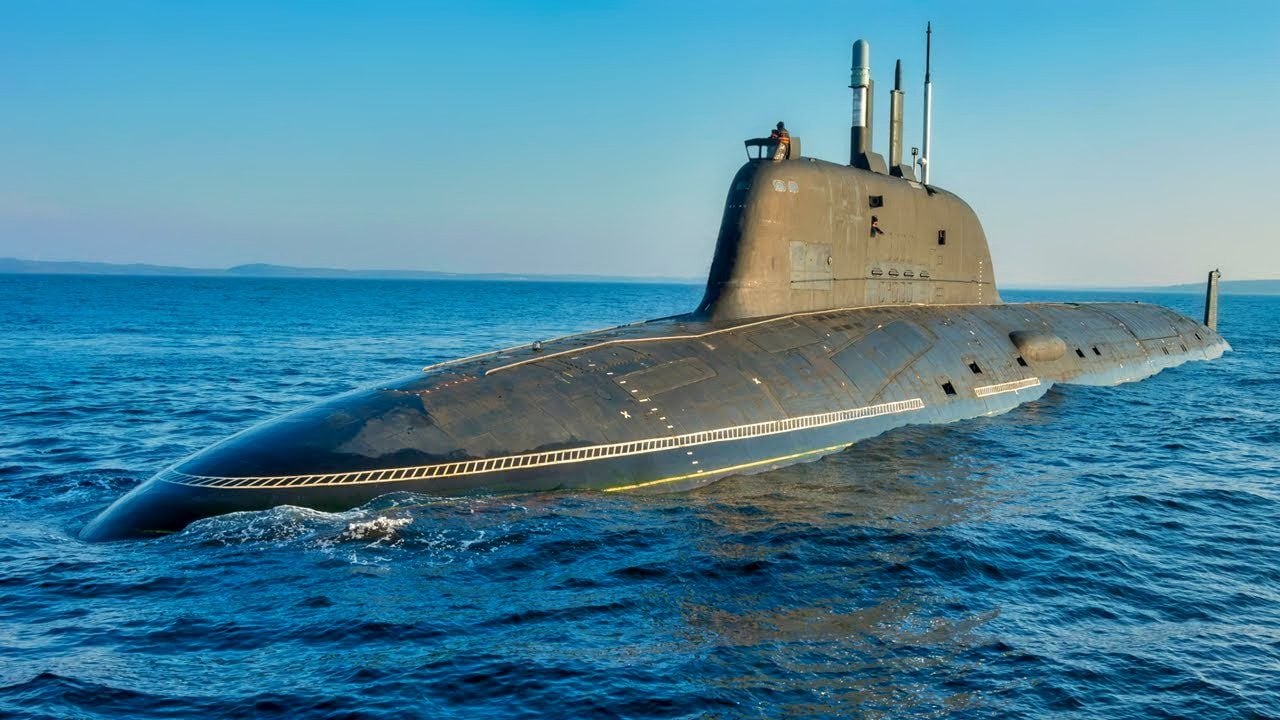2 Russian 'State of the Art' Nuclear Submarines Complete 4,000-Mile Arctic Journey
Two of Russia's most advanced nuclear submarines, the Borei-class Imperator Aleksandr III and Yasen-M class Krasnoyarsk, recently completed a significant Arctic sortie, transferring from the Barents Sea to the Pacific Ocean.
Summary and Key Points: Two of Russia's most advanced nuclear submarines, the Borei-class Imperator Aleksandr III and Yasen-M class Krasnoyarsk, recently completed a significant Arctic sortie, transferring from the Barents Sea to the Pacific Ocean.
-The submarines, now part of the Pacific Fleet, navigated through Arctic waters during Russia's Ocean-2024 strategic exercises, marking a 4,000-nautical-mile journey. The Borei-class sub carries 16 submarine-launched ballistic missiles, while the Yasen-M class is equipped with 32 vertical tubes for long-range missiles.
-This transit demonstrates Russia's continued focus on bolstering its strategic deterrence in the Pacific.
Pair of Russian Submarines Completed Arctic Sortie
Two of the Russian Navy's newest submarines recently completed their first "Arctic sortie," Russian state media outlet Tass reported on Wednesday. The Borei-class SSBN Imperator Aleksandr III (Emperor Alexander III) and Yasen-M class SSGN Krasnoyarsk made the transit from the Barents Sea to the Pacific Ocean – transferring from the Northern Fleet's area of operations to the Pacific Fleet.
Tass confirmed that the two subs arrived at the "submarine base in Vilyuchinsk in Kamchatka," which was established as a closed military town during the Cold War. Russian Navy Commander-in-Chief Alexander Moiseyev and Deputy Defense Minister Pavel Fradkov welcomed the arrival.
"The latest nuclear underwater cruisers completed the difficult under-ice voyage and arrived in the main base of the Pacific fleet. They are unrivalled in their class and will operate in the Pacific fleet to fulfil strategic deterrence tasks, maintain and increase the combat potential and military might of Russia," Fradkov said in a statement to Tass.
"I would like to note that the existing training system of submariners, the school of under-ice navigation, and the level of readiness of headquarters of all levels of the Northern and Pacific fleets allow rapidly and with good quality fulfilling such important and responsible tasks," Moiseyev added and reportedly issued "departmental awards" to the Russian submariners.
Though Russian media only acknowledged that the journey was completed, the movements of the submarines had been closely monitored after the Russian Ministry of Defense announced the 4,000 nautical mile-long transfer of the two nuclear-powered boats during the Russian Navy's recently completed Ocean-2024 strategic exercises – the largest held since the Cold War.
"The Borei-class SSBN Imperator Aleksandr III and Yasen-M class SSGN Krasnoyarsk has made their under ice transit to the Pacific Fleet, arriving during Okean. Seen here, possibly in the Bering Sea, along with the PACFLT corvette GreGremyashchiy, with rescue tug SB-408 also present," wrote Thord Are Iversen, military and defense analyst, earlier this month on X, the social media platform formerly known as Twitter.
The submarines employed a route that took the boats through the waters of "six Arctic seas in different ice conditions," the Russian ministry claimed, according to a report from Newsweek. That likely included the Chukchi Sea, which bounds the waters of the United States near the coast of Alaska.
What We Know About the Russian Submarines
The 24,000-ton nuclear-powered Imperator Aleksandr III was launched in December 2022 and commissioned into the Russian Navy at the end of last year. The vessel is named for Czar Alexander III, who was Emperor of Russia, King of Congress Poland and Grand Duke of Finland from March 1881 until his death in 1894. During his reign, Russia fought no major wars, and the Czar was styled "The Peacemaker."

Imperator Aleksandr III is the seventh and newest Project 955 Borei-class submarine, and the fourth of the improved Project 955A (Borei-A) sub-class. The submarines are a key component of Moscow's nuclear triad – armed with up to 16 submarine-launched ballistic missiles, with each missile able to carry six nuclear warheads.
The 13,800-ton cruise missile submarine Krasnoyarsk is the fourth of the Yasen-class, and the second to be deployed to the Pacific Fleet. The boat, which is outfitted with 32 vertical tubes that can launch a variety of long-range anti-ship and land-attack missiles, completed its sea trials last year, and reportedly conducted three training-combat test launches of the "Kalibr-PL" and "Onyx" missiles.
An additional four Yasen-M submarines are now in various stages of construction.
Author Experience and Expertise: Peter Suciu
Peter Suciu is a Michigan-based writer. He has contributed to more than four dozen magazines, newspapers, and websites with over 3,200 published pieces over a twenty-year career in journalism. He regularly writes about military hardware, firearms history, cybersecurity, politics, and international affairs. Peter is also a Contributing Writer for Forbes and Clearance Jobs. You can follow him on Twitter: @PeterSuciu. You can email the author: [email protected].
Image Credit: Creative Commons and/or Shutterstock.


